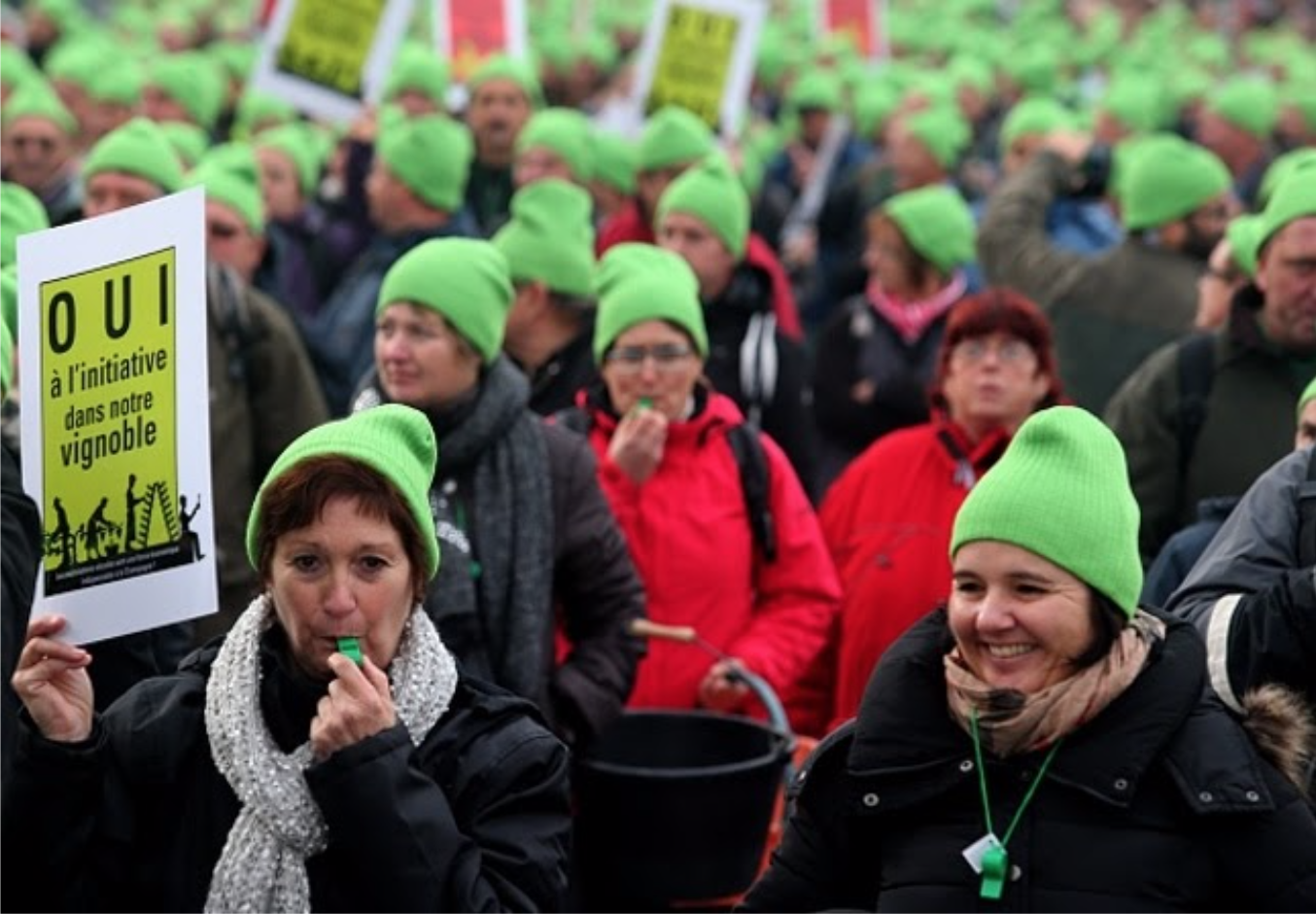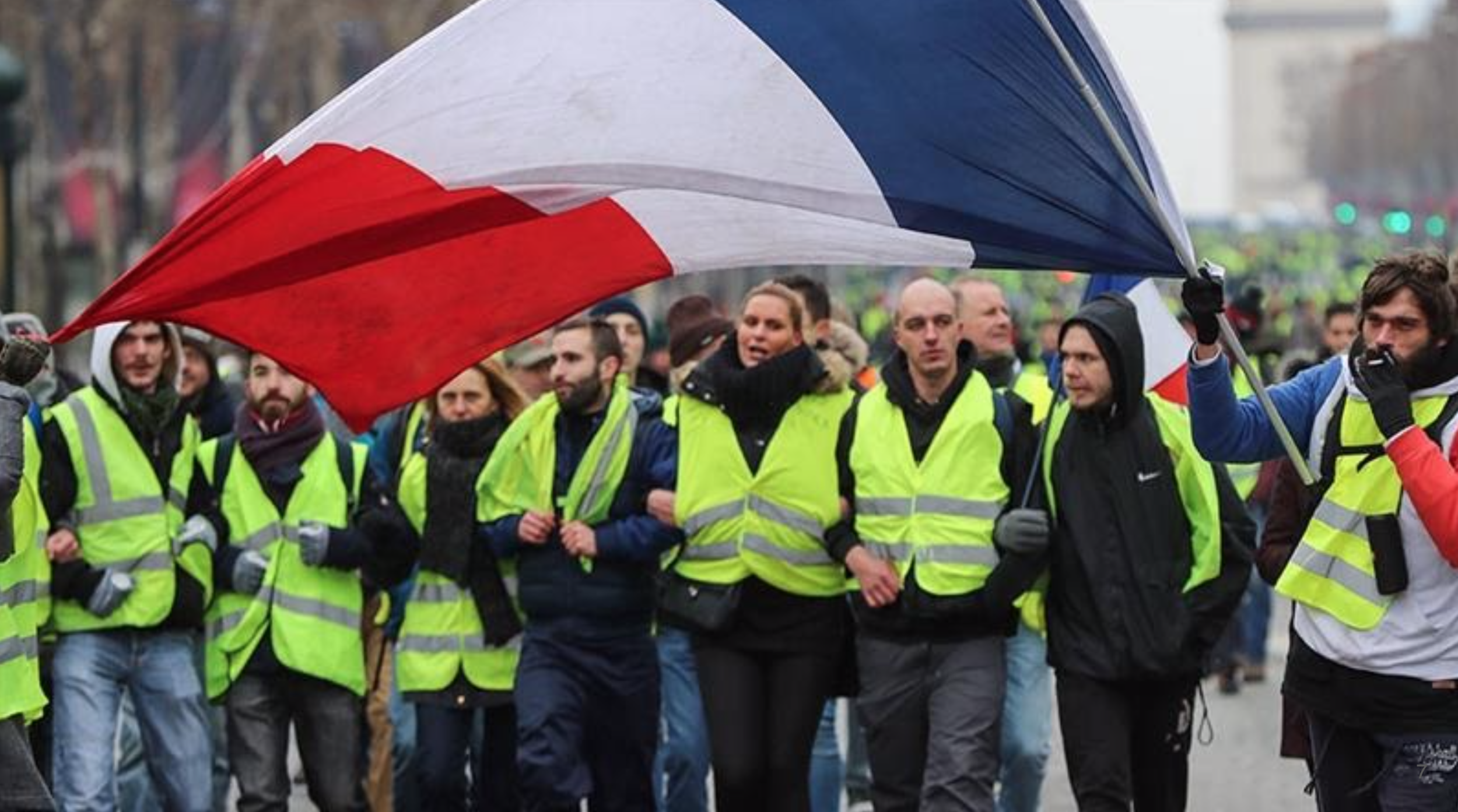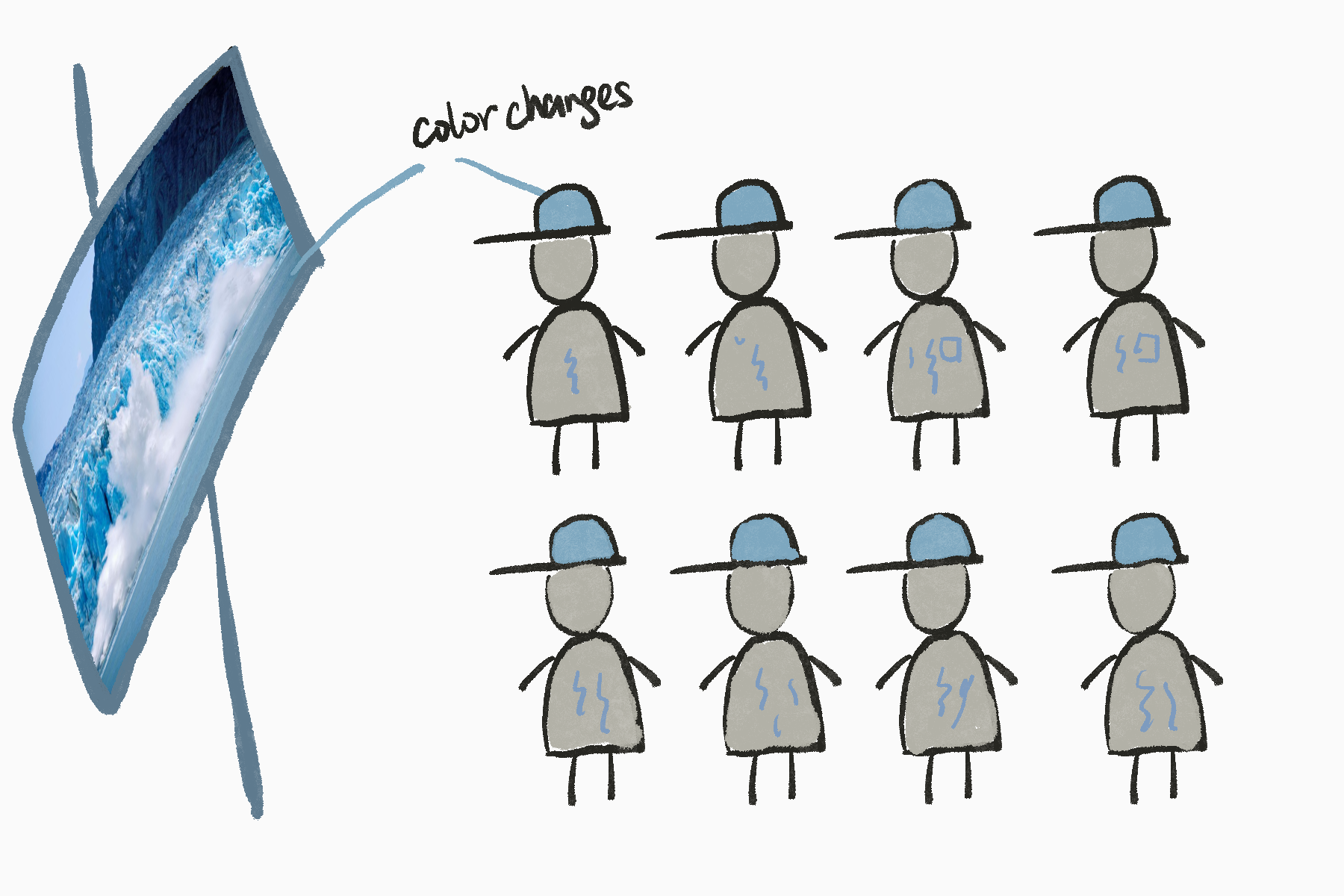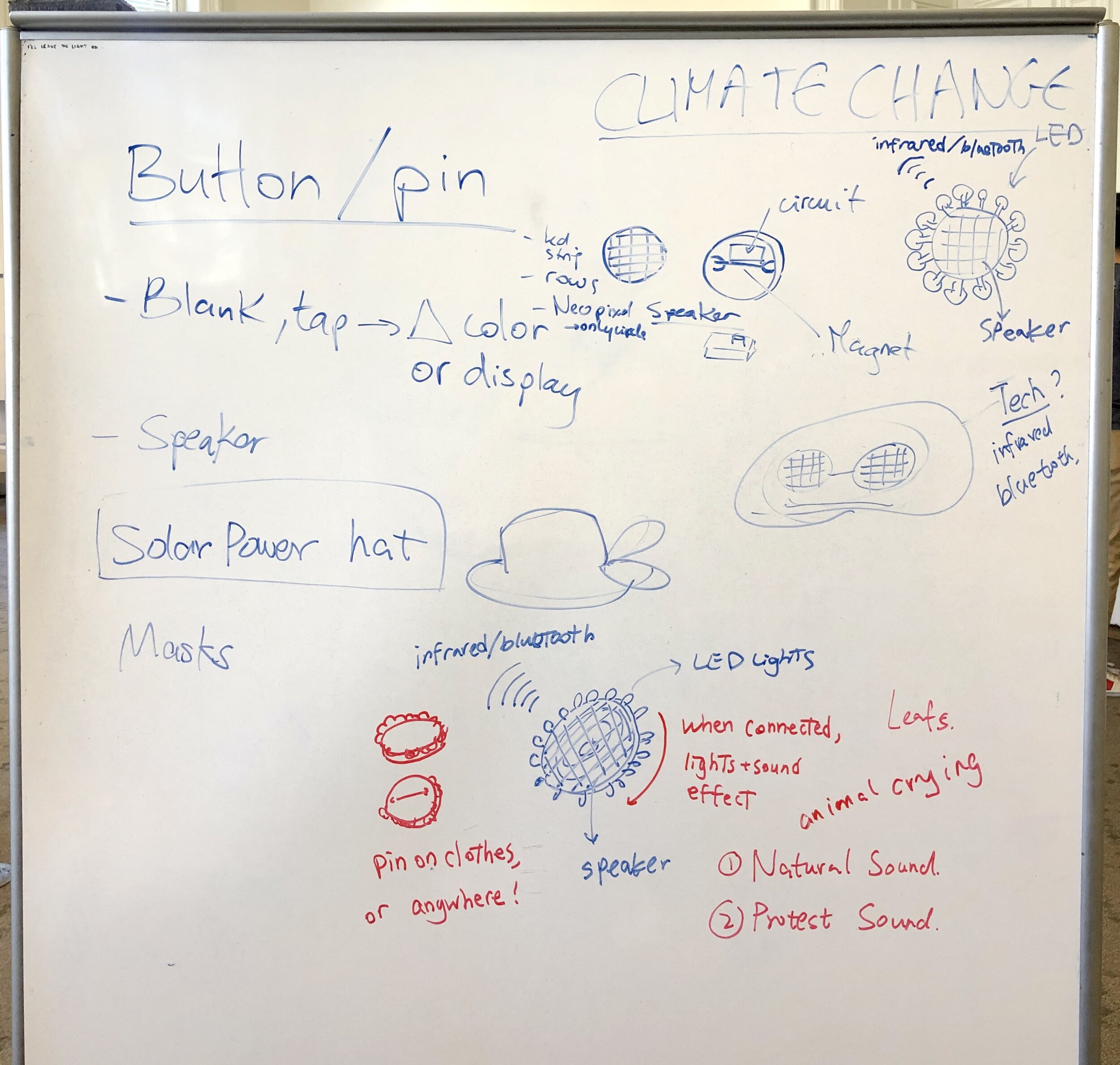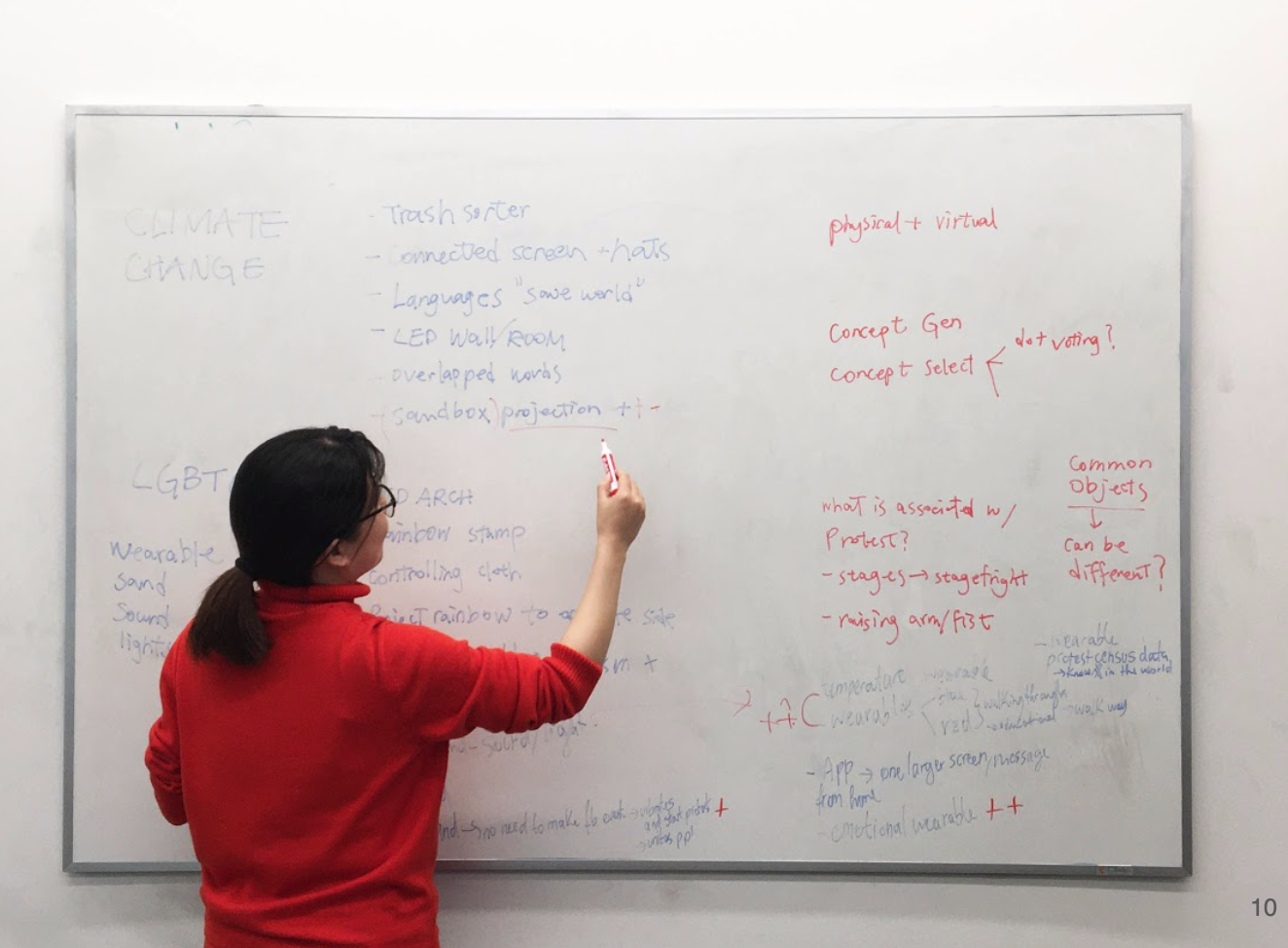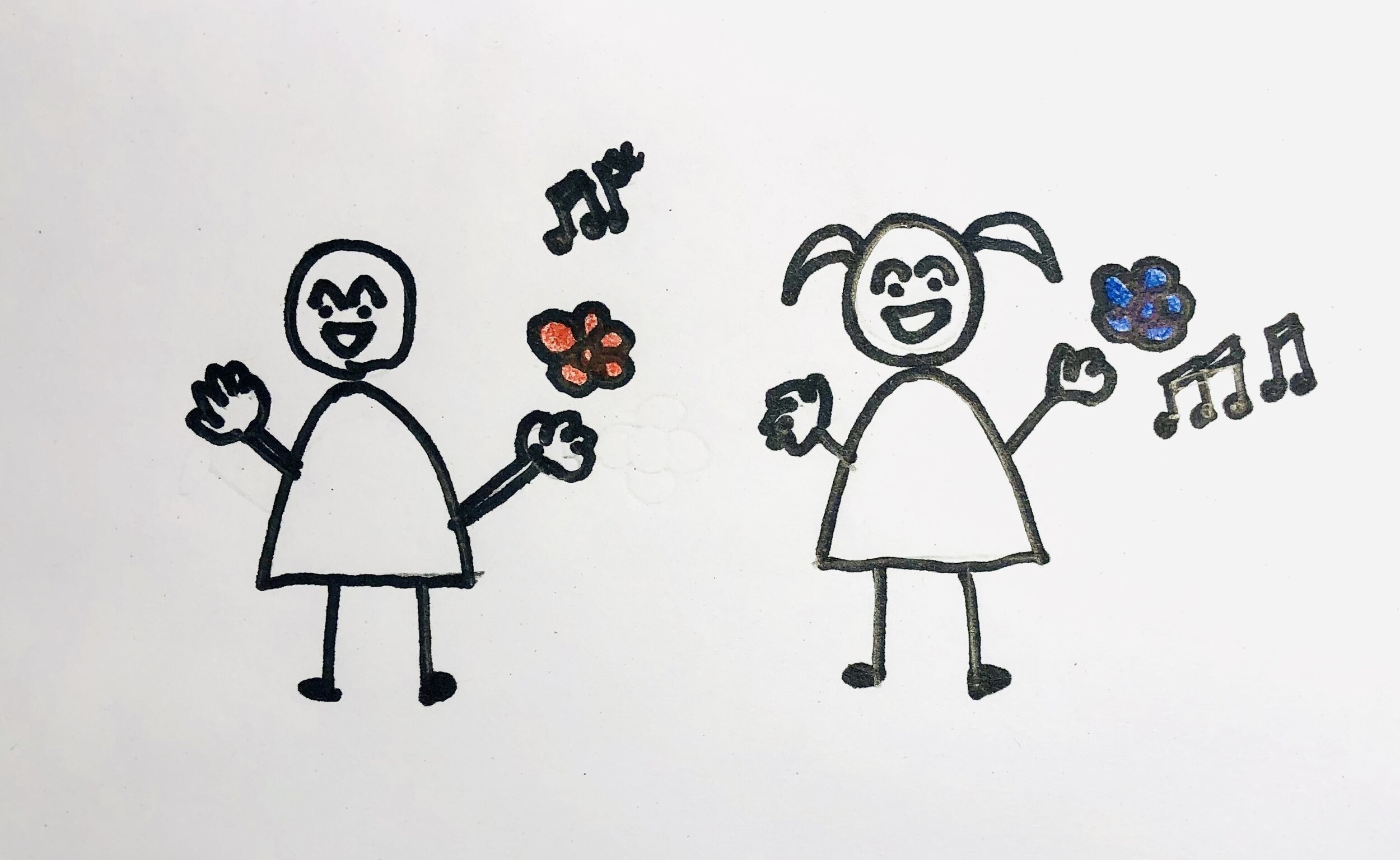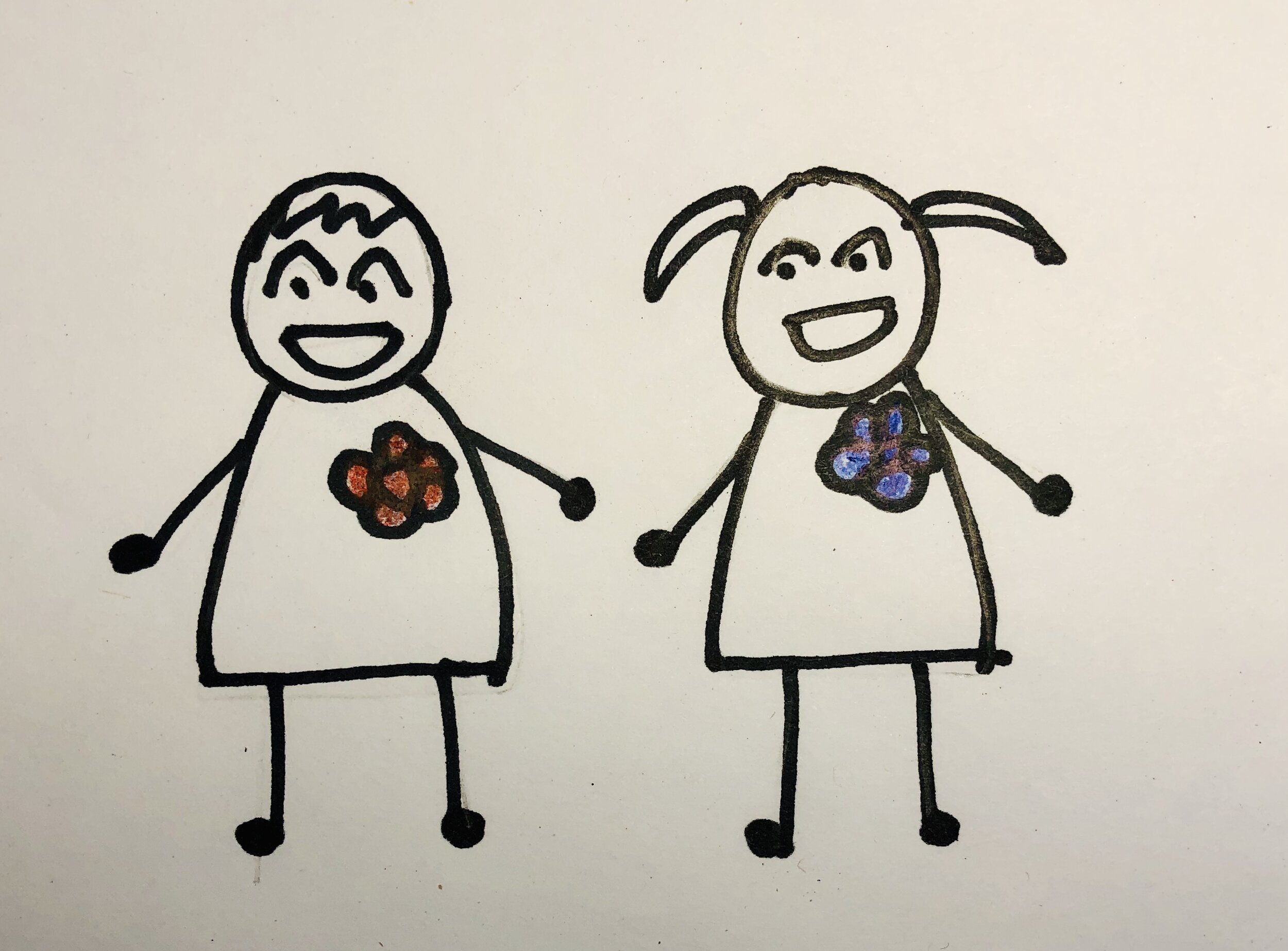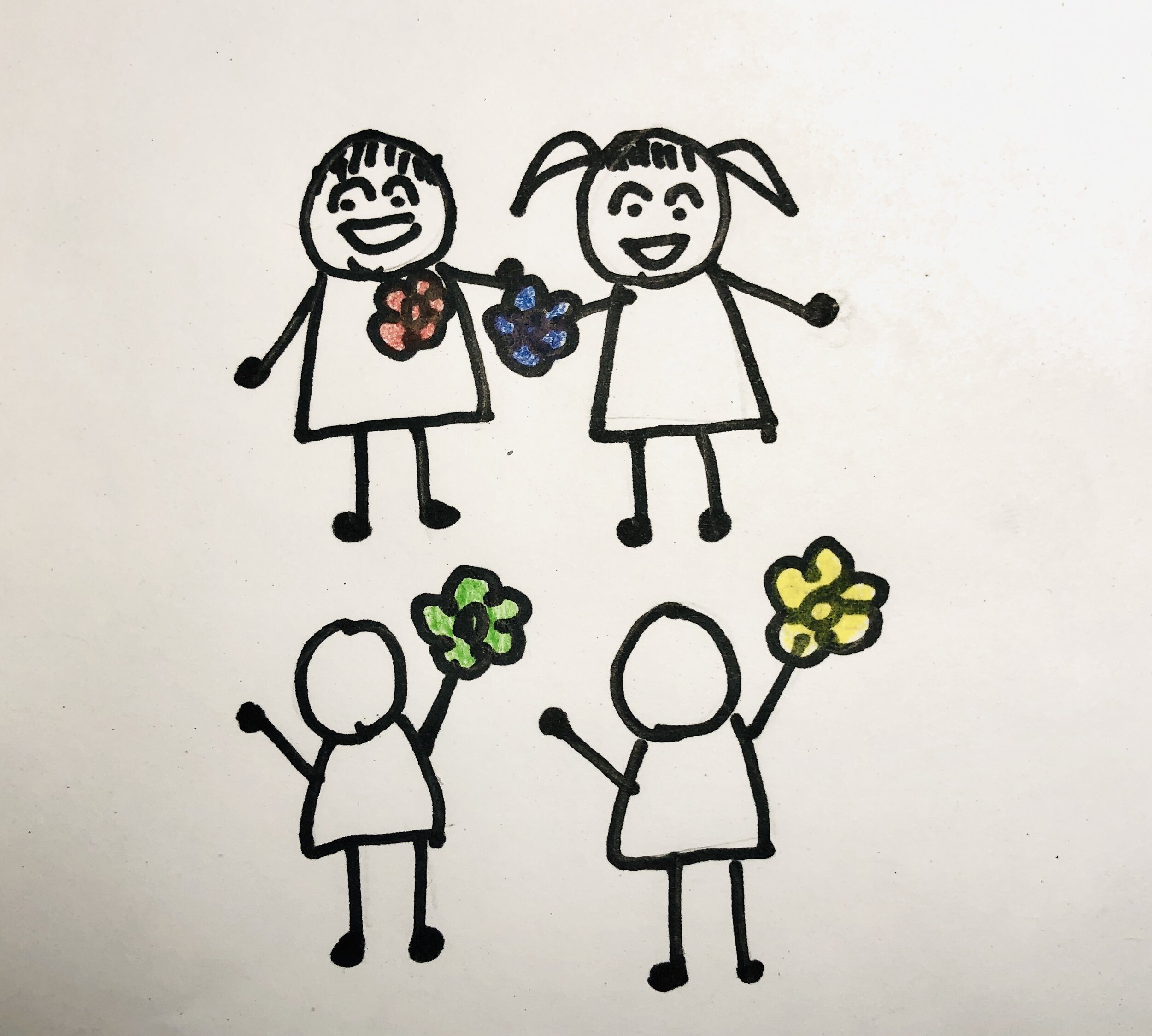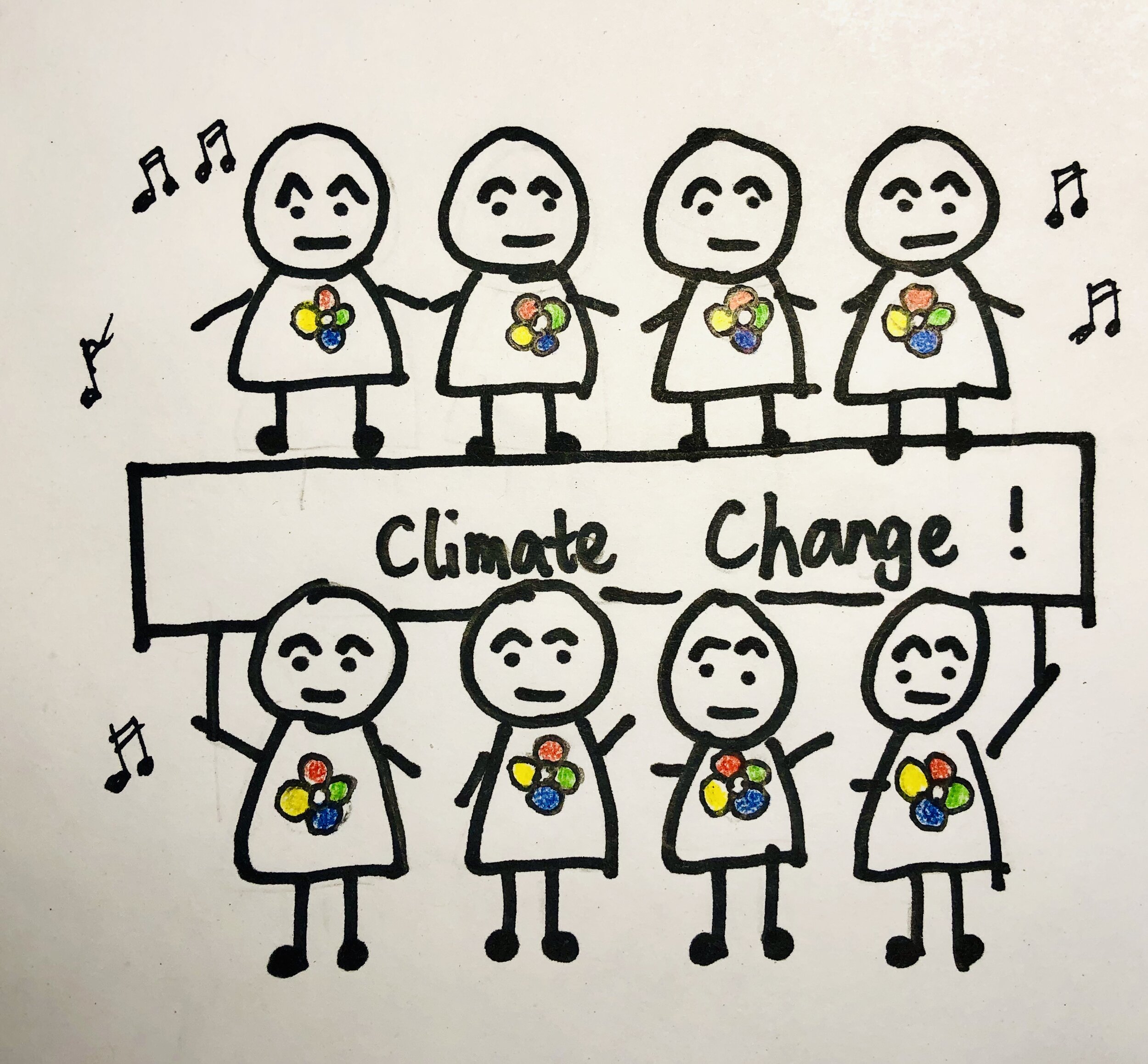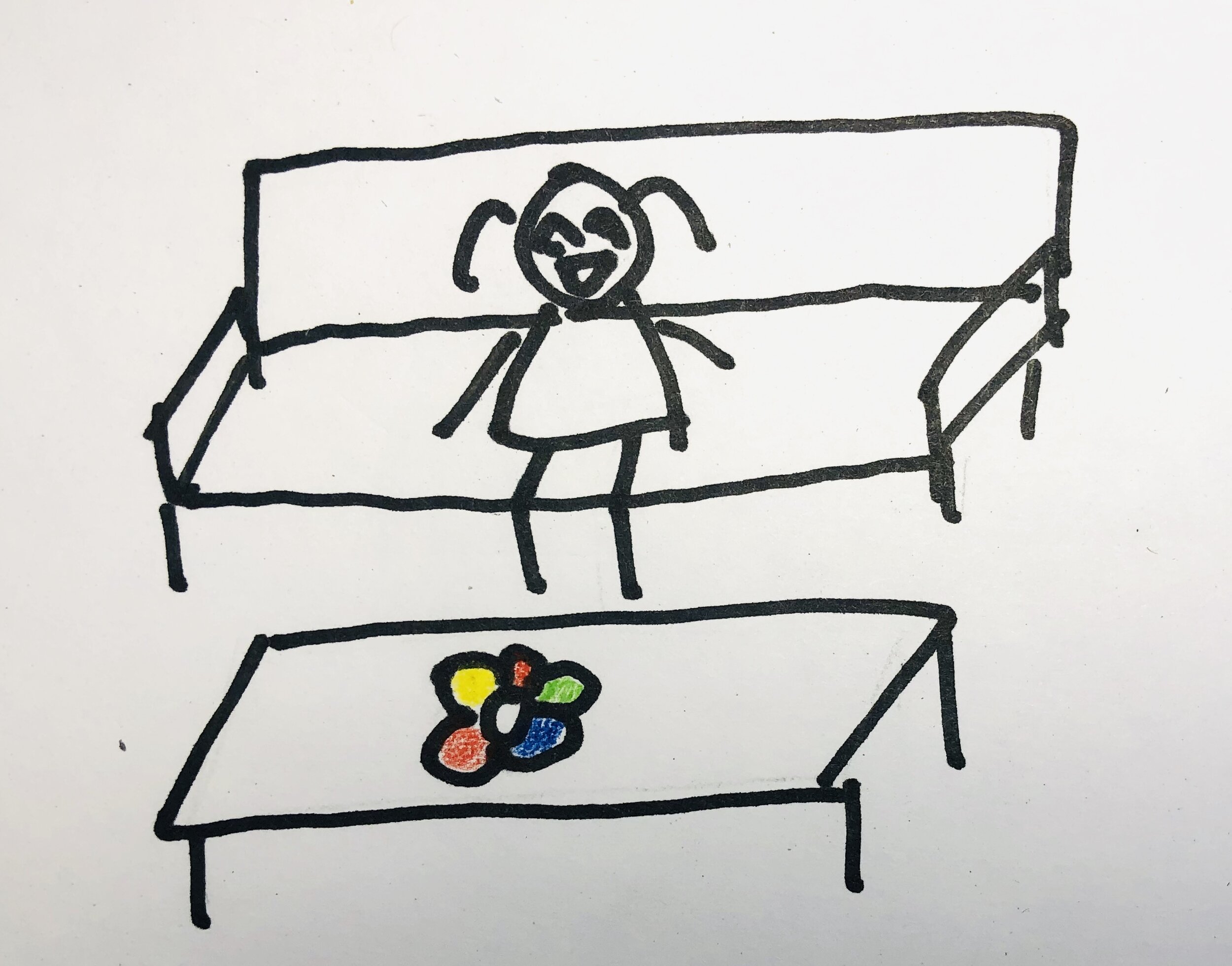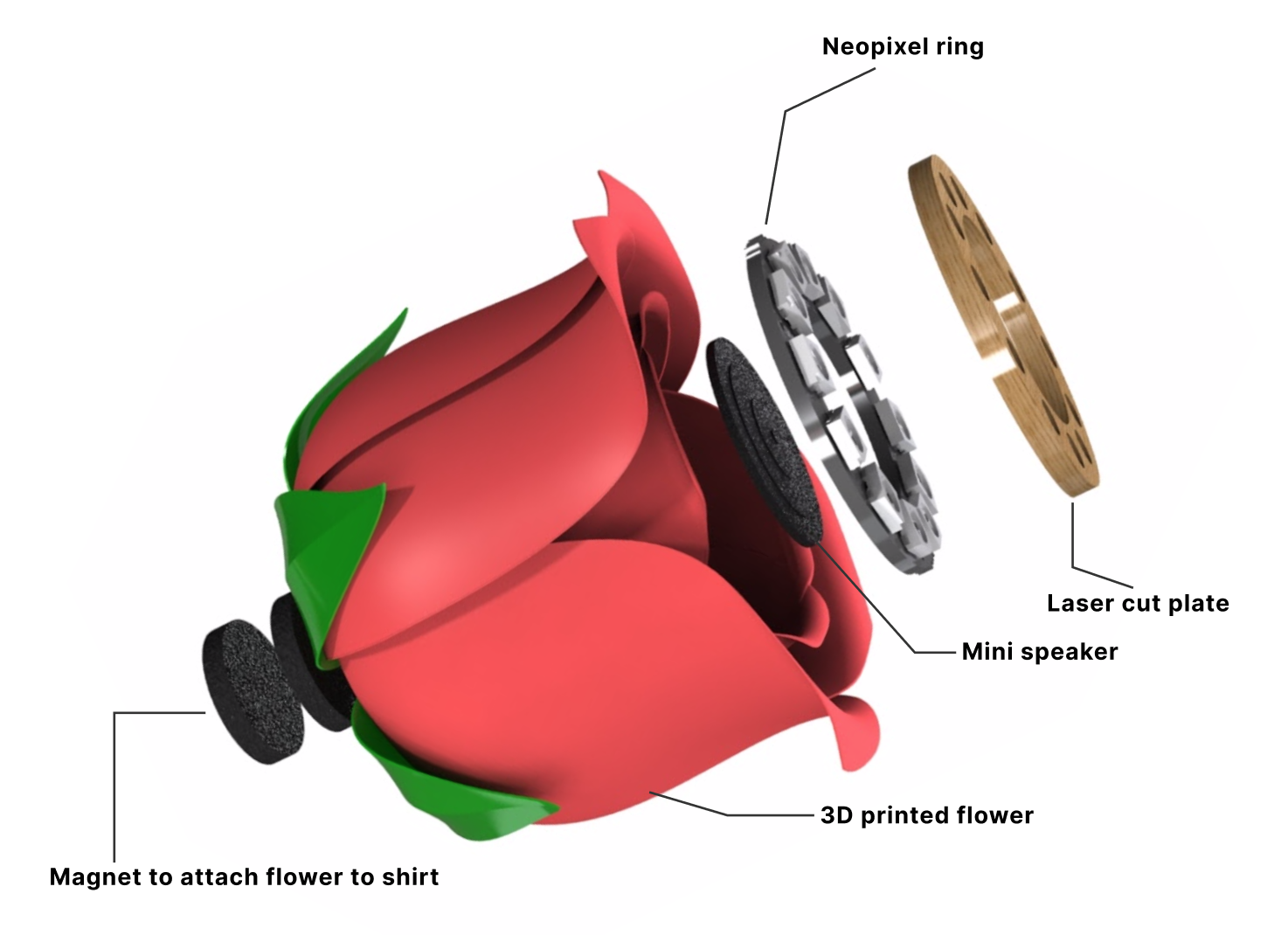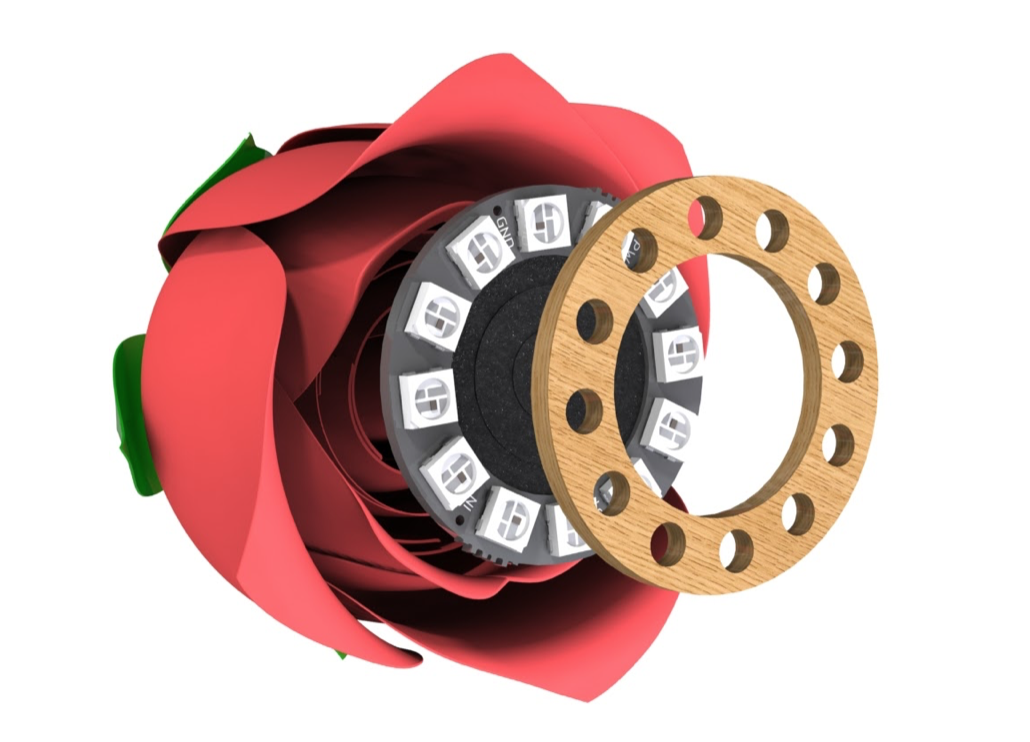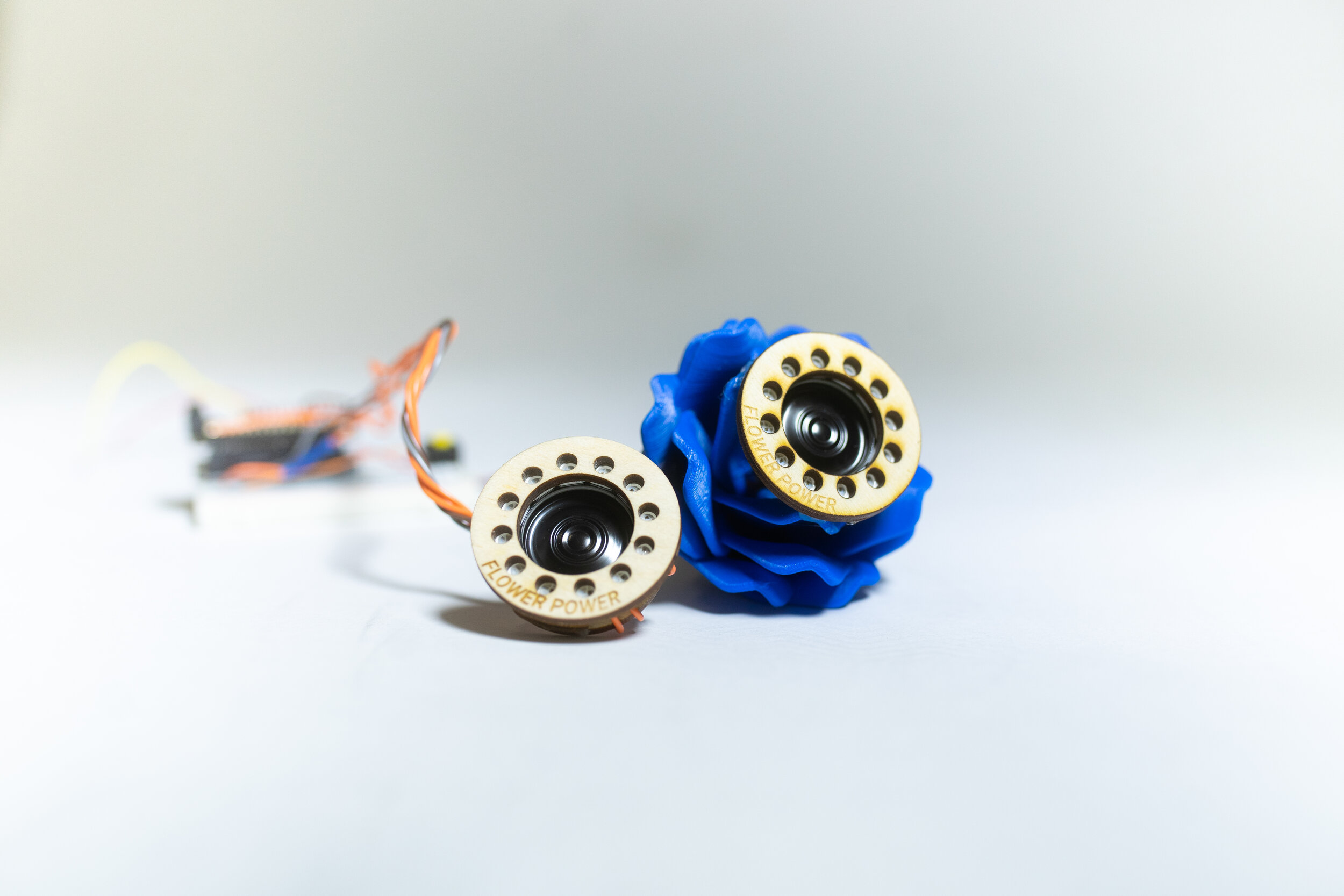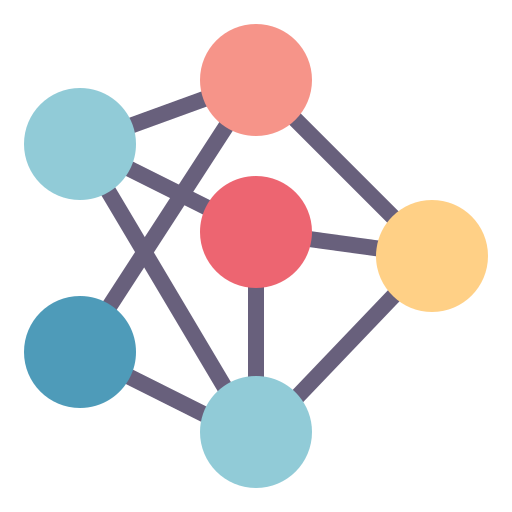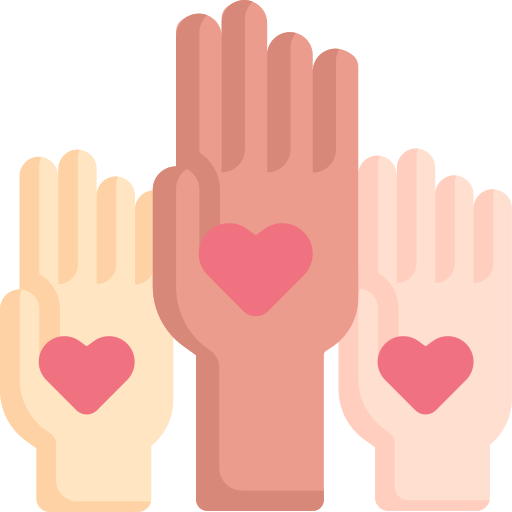“If you see something that is not right, not fair, not just, you have a moral obligation to do something about it. “
– John Lewis
Flower Powered
Tools: Arduino, Adafreuit nRF52840, Music Maker Feather, NeoPixel, Sound Speakers
My Role: Light and Sound Interaction Designer
Type: Group Project
Duration: 2 weeks (Jan 2020 - Feb 2020)
How Might We better build connections between individual protesters?
Brief
We feel power in natural sounds when everything is silent. We wanted to build a product that can bring such power to people in a protest. Our name is inspired by an event that took place in Berkeley in the 1960-70s called “Flower Power”, where protesters wore vibrant colors and gave out flowers to policemen as symbols of peace and nonviolence. We wanted to utilize those symbols to advocate against climate change. Our design revolves around combining sounds from nature, light patterns and building a sense of community. We designed a wearable button capable of interacting with other similar buttons through bluetooth. Indeed, each person will have a default color and associated symbolic sound when first receiving it. Before the protest starts, the button encourages protesters to build connections with each other by enabling them to exchange sounds and colors, creating shared light patterns and playing symbolic sounds in unison.
Final Design
Design Process
Problem Space
In this project, we were asked to design and prototype a novel protest object.
Flower Power Movement
We explored climate change protests and what we could use to symbolize nature. We were particularly inspired by the Australia wildfires and global warming. We all felt that sound can carry great meaning and set an atmosphere anywhere and at any point in time, letting the mind imagine the scene. We brainstormed of sounds that reminded us of nature and of a nature in distress. Additionally, flowers are part of nature .They represent both the beauty of nature and the power of nonviolent protesting. Therefore, it’s a powerful artifact to convey the message. Using flowers to convey a message of peace naturally led us to the Flower Powered (also Inspired by Flower Power Movement).
User Research
We conducted 5 interviews where we asked a couple of protesters about what they thought were the most powerful elements in a protest.
Main Insights:
They would want their voice to be heard among the crowd.
They would want to build connections between other protesters.
They would want to stand out, so they would wear quirky clothes and catch other people’s eyes.
These brought us to our three main design elements as direct answers to each feedback respectively: sound, community, and light.
We further researched other protests focusing on the role of colors. We focus on the French Farmers Strike (Green), the Saffron Protest in Myanmar (Red) and the Yellow Vest Protest in France (Yellow).
Ideation
In the climate change space we brainstormed more ideas including: public projection installation where individual protestors are able to share their own thoughts and message by projecting them or a colorful hallway for people to pass through with light patterns embedded with messages.
After dot voting, attribute listing and clustering, and pros and cons analysis we decide to focus on wearables. Some of our wearable concepts include:
A solar powered hat with a light on top. In this concept, each individual protester wears a hat. A big screen sits ahead of the protestors. The color (light) of the hat changes together (for example, the big screen displays melting glaciers, hats color become blue all together to mimic the water flowing down from the melting glacier. The big screen displays forest fire, each hat becomes red to mimic the fire burning).
Digital Screen Masks. Masks are a common protest artifact. We envisioned a mask that people could wear so that a message could be conveyed on multiple screens making the masks.
Interactive Pins. Pins (buttons) are portable and easily distributable. It’s possible to embed sound and light to pass on the message.
Design Decisions
A central question to link the components we picked was “How Might We build connections between individual protesters?” Indeed, we wanted to build a sense of community.
We felt that synchronising light patterns and symbolic sounds would create a connection between people and illustrate the power of sound. The sounds we used represented the fact that nature is in distress. We wanted to use touching sounds such as wildfire and animal crying to convey our message about uniting to preserve the Earth. Emphasizing nature’s role in our lives, we wanted to use earthly materials. As a matter of fact, flowers were central to our design as well, as they symbolized non-violence and peace. Lastly, we thought that having a feature enabling people to exchange sounds and colors encouraged social interaction and discussions about ideologies.
Interaction Design
Through an infrared between pins, protesters can gather colors and sounds from each other to create a sense of community and unity all while building up their own collection.
For our project design, the climate change protest contains 4 symbolic theme colors: red, green, blue and yellow (with each color corresponding to different sounds).
Each person will have their default color and sound when they first receive their protest pin. Before the actual protest starts, we encourage them to build connections with other protesters by simply facing the pins to each other.
When an actual protest starts, people walk with synchronized color patterns and powerful sounds of nature.
With our more personalized pin, people participating in a protest can feel empowered and can feel more connected to people while creating memories between protests to keep as a memento for the future.
Ultimately, we want people to build up a sense of achievement for participating and standing up for their own beliefs.
Prototyping
Hardware Design
Steps and Iterations
Our initial idea was to create a pin (button) that could be attached to a shirt using a safety pin. The button would have LEDs around it and a speaker at the center, resembling a sunflower.
We rapidly switched from the idea of using individual LEDs to the Neopixel ring because it is more compact and easier to control.
We wanted to include elements from nature in our device, which is why initially, we wanted to create a structure made out of dried flowers in wax as shown in 2nd step above. We would 3D print a cylindrical mold to pour the wax and flower mix in.
In order to rapid prototype our device, we laser cut a front and back plate to sandwich the electrical components with hot glue in the same way as the wax and flower structure would have. We chose to use wood because it is still a material reminding us of nature.
We noticed that the speaker was not very loud which is why we thought of replacing the back plate with a conical shape to create a resonance chamber and amplify the sound (Figure 3 from above). At this point, our wooden design did not carry the two mains symbols of the Flower Power movement, flowers and bright colors, which is why we moved to our final design.
Software Design
We split up the task on figuring out how to effectively use the Neopixel and sound speakers using separate boards. After individually simulating the expected outcome with the interactions of each attribute, we attempted to combine both code files into one.
Feather: Adafreuit nRF52840, music maker feather wing
Reflection
Powered by Flower
This is my first time doing physical computing interaction design and I absolutely love it! Hardware programming is difficult to debug as there are too many unknowns and uncertainty of machines and devices. However, the final tangible product is powerful.
With our interaction pin, people participating in a protest can feel powered.
The pin can bring connections to people.
Create memories between protesters.
And, build up a sense of achievement for participating and standing up for your own beliefs!



